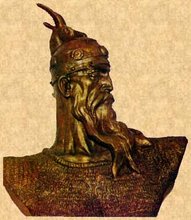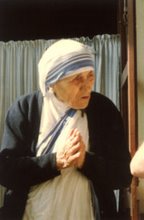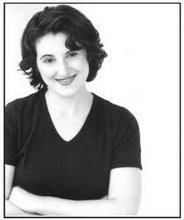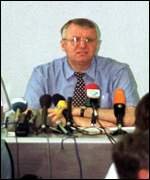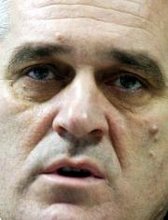 95-të vjetori i pavarësisë së Shqipërisë-RROFTË SHQIPRIA PËRGJITHMONË!
95-të vjetori i pavarësisë së Shqipërisë-RROFTË SHQIPRIA PËRGJITHMONË!
Wednesday, November 28, 2007
Friday, November 23, 2007
An Albanian analysis of the Serbian campagin against the Kosovar Albanians
************************************
1. The Campaign to Destroy Kosova's Autonomy.
Many observers today agree that the present Yugoslav crisis has historical roots in structural defects of Yugoslavia, which determined the country's permanent instability. So it is no accident that this crisis should have manifested itself soon after Marshal Tito's death. Very soon it was realized that his charisma, more precisely his uncontested authority, had been a key element holding the balance in the delicate federation of Yugoslavia. For Serbia almost at once began to seek a redefinition of the federation, with the aim of either acquiring' complete hegemony in Yugoslavia or creating a Greater Serbia.
Serbia opened its campaign with Kosova, calling its long-established autonomy into question. Unfortunately the other Yugoslav republics, faced with Serbia's aggressive insistence, agreed to its demands for a reduction of Kosova's autonomy (naturally, until a later stage Serbia hid the fact that its real goal was a complete abolition of that autonomy), in the hope that sacrificing Kosova would satisfy Serbian appetites. The Albanians thus remained alone in their struggle to defend their autonomy, and Serbia received the go-ahead to use the authority, instruments and military and police potential, of the Federation itself in subduing Kosova. The Albanians offered a great deal of determined resistance against the Serbian campaign to destroy Kosova's autonomy, but in the constellation of forces/interests in the Yugoslav federation everything was against them.
In 1988, after an eight year systematic campaign of repression, Serbia was trying to finalize the project of abolishing Kosova's autonomy. In the public discussion regarding the proposed constitutional changes, organized in October of that year (albeit in an atmosphere of unprecedented propagandistic and psychological terror and enforced police repression), Albanians declared themselves in a plebiscitary manner against the changes
and for preservation of the autonomy that had been guaranteed by the constitution of 1974. Since in its final proposal for constitutional changes Serbia completely disregarded the will of the Albanian people, in November 1988 for ton successive days they marched from all the cities and villages of Kosova towards the capital Prishtina, where they peacefully demonstrated against the Serbian proposal to strip them of their autonomy. 800,000 Albanians took part, which is more than half the adult population of Albanians in Kosova. After this, Serbia deposed the leadership of Kosova headed by Azem Vllasi - which disagreed with its aims - and installed Rahman Morina, the Kosova police chief, as head of a new regional leadership. In protest against this act, some 4,000 miners from Trep�a on 20.2.1989 looked themselves deep in the mines and started a hunger strike. Nine days later Morina handed in an irrevocable written resignation - only to withdraw it as soon as the miners came out of the mine.
While preparing for the meeting of the Kosova assembly at which the voting charade was to take place, Serbian police questioned all the Albanian deputies (even including some who at the time were in hospital), threatening persecution of their families and their own liquidation if they did not vote for the changes demanded by Serbia. Nevertheless, on 23.3.1989 - the day this meeting took place - in order to make more certain the organizers filled all the empty seats in the Kosova assembly with civilian police and local functionaries of the Communist League: there is photographic evidence proving that these persons took part in the voting. On 28.3.1989, the day the assembly of Serbia was due to vote on these changes, in many cities of Kosova Albanians rose to demonstrate in protest. I In order to disperse these peaceful demonstrations, Serbian police used firearms and killed at least 23 persons.
In 1990, however, the new Kosovo assembly initiated a discussion aimed at annulling the imposed amendments. But Serb deputies in the assembly tried all kinds of procedural obstruction, and the police on several occasions prevented the entry of delegates, into the assembly building. This went on until June, when the Serbian parliament adopted a law that - in clear breach of the Yugoslav constitution - gave it the right to dissolve Kosova state organs. Now running against time, the Albanian delegates on 2.7.1990 in front of the assembly building adopted a Constitutional Declaration declaring Kosova equal to other Yugoslav federal units in any future federal or confederate arrangement. On 5 July 1990 Serbia took the decision to dissolve the assembly and government of Kosova; following this, the Serbian police dissolved all the organs of local authority in Kosova. On 7 September 1990 the Kosova assembly, meeting at Kacanik, adopted a new constitution under which Kosova proclaimed itself an equal republic within the future federation or confederation of Yugoslavia.
2. Consequences of the Abolition of Kosova's Autonomy
a) Police disbanded. 3,500 Albanian policemen were sacked.
b) Courts abolished. In seven cities, municipal courts were either closed down or abolished, while other courts were placed under 'imposed rule' from Serbia. 210 Albanian judges and public prosecutors were sacked. By decision of the Serbian authorities, the Higher Court of Kosova, the Constitutional Court of Kosova, the Public Prosecutor's Office of Kosova and the Court of Associated Labor of Kosova are to be abolished from 1.1.1992.
c) Economy destroyed. Almost all enterprises (380 up to now) have been placed under 'imposed rule'. Serbs have replaced all Albanian managers and higher personnel. Over 85,000 Albanian workers - around 70% of all Albanians employed in the social sector - have been sacked, either for participating in the one-day general strike of 3.9.1990 or because they would not sign a declaration supporting the introduction of 'imposed rule' (loyalty oath) and Serbian control over Kosova. If one bears in mind that an Albanian family on average has six members, this means that over 500,000 people have been left without means of existence: at the moment they are surviving only thanks to an impressive national solidarity. In addition, the Serbian police have started throwing these workers out of council flats. In general, economic activity has been practically paralyzed This year not a single industrial or public building has been built, &part from a few police barracks. The entire system of payments has broken down. Serbian sources themselves admit that economic activity this year in comparison with last year which was already very bad, is down by around 40%. The banking system has been destroyed: Kosova banks have been closed down and their assets taken over by Serbian banks (Albanian citizens cannot draw their money out).
Industrial plant has also been dismantled and taken away ('Kluz' in Glogovc; a factory manufacturing car components in Peje; a factory making suspension systems in Prishtina; etc). The Serbian authorities have, in addition, closed down 3,064 private Albanian businesses for one year, on the grounds that their owners solidarized with the general strike of 3.9.90. Taxes on private Albanian enterprise have risen by 600%.
d) The closing down of schools in the Albanian language Last year the Serbian authorities ordered Albanian schools to stop working according to the existing Kosova curriculum and change over to the new Serbian one. In the latter, Albanian history and literature are replaced by anti-Albanian and chauvinistic propaganda. During the campaign aimed to impose this new curriculum, rejected by Albanian teachers and pupils alike, the Serbian authorities at the start of the 1990-91 academic year closed down 11 primary and 4 secondary schools. From 1.1.1991, the salaries of 3,574 primary-school teachers and 6,000 secondary-school teachers were stopped. From 1.3-1991, the same
happened with the remaining 14,265 primary-school teachers. A few days before the start of this academic year (1991-92), the Serbian authorities decided to sack also the remaining 8,000 secondary-school teachers. 620 Kosova university teachers have also been sacked, and Albanian-language education completely ended. Primary schools have not opened. When teachers and pupils in some schools tried to open their classrooms, the Serbian police came in to prevent them. The police habitually use truncheons, tear gas, firearms and armored personnel carriers to disperse pupils and teachers, students and lecturers.
e) The destruction --of Albanian- 1anguage media On July 5, 1990 a Serbian special police unit suddenly attacked and occupied the Prishtina Radio and Television Center. Outside management was imposed. 1,300 Albanian journalists and other staff were sacked. The same happened to all local radio stations in Kosova. As a result in Kosova, where Albanians form 90% of the population, there is no Albanian-language television or radio. On 8.6.1991 the Serbian authorities banned Rilindja the only Albanian language daily in Yugoslavia. Also banned was the student journal Bota e Re where the police broke into and destroyed the premises, including the archives. Up to now 150 Albanian journalists have been prosecuted and sentenced, with prison sentences of up to 14 years (Hidajet Hyseni). Jusuf Gervalla, a journalist working for Rilindja, was killed in Germany by the Serbian secret police.
f) Destruction of the health institutions .All hospitals and clinics in Kosova have been placed under imposed administration. 1,500
Albanian doctors and medical staff have been sacked. The Serbian police used violence to throw out Albanian doctors, sometimes directly from the operating theatres. Sacked Albanian workers and their families (i.e. over 500,000 people) have no right to medical care. As a result, the level of health care of Kosova inhabitants, already the lowest in Yugoslavia and Europe, has fallen drastically. In the Gynecological Clinic of the Medical Faculty of Prishtina, for example, more than one-third of all births in Kosova would normally have taken place. However, all Albanian doctors and mid-wives have now been expelled and as a result, whereas in 1989 the Clinic had 11,652 births (93% by Albanian mothers), between 1.1. and 30.4.1991 there were only 823 births (less than 13% by Albanian mothers). Moreover, TB, previously on the decline, is now rising sharply again.
g) Occupation and blockade of cultural institutions. The Kosova National Theatre, the National and University Library of Kosova, the Institute of Historical Studies of Kosova, the Kosova Archives, etc. have all been occupied by the Serbian police. The police has forcibly expelled Albanian directors and most of the staff, introducing instead an imposed outside administration. Archival treasures of priceless value - key documents relating to Albanian history and Albanian-Serb relations - have been removed from the Kosova Archives, while in the National Library a major proportion of Albanian-language books have been destroyed on the grounds that they were enemy propaganda. Local libraries in the Albanian language are also being closed down (e.g. 12 such libraries in the commune of Podujeva). On 16.10.1991 the Serbian assembly passed a law closing down the Kosova Academy of Arts and Sciences.
h) Postal Services These have been placed under 'imposed rule' and practically all their Albanian workers sacked. In Albanian villages, local post offices have been closed down.
i) Red Cross. The Kosova Red Cross too has been placed under 'imposed rule'. Its Albanian staff has been sacked, while funds and aid collected beforehand, including food and medicine, have been confiscated.
j) Sport - 'Imposed rule' has been introduced also into sports 0 clubs and premises. The Albanian staff has largely been dismissed. Sports competitions have been stopped.
k) Usurpation of funds The Serbian authorities have usurped all Kosova funds for culture, education, health, sport, etc. They have stopped financing all Albanian institutions (the Albanian Studies Institute, the Academy, schools, journals, sports clubs, etc). By docking the pay of Albanian teachers alone, the Serbian government has usurped DM 122 million. This money is used to finance the police.
The repression conducted against the Albanian population in Kosova is total: it affects all aspects of life and all categories of the Albanian population. Between March 1981 and October 1989, 564,373 Albanians passed through police hands according to official figures. Since then the intensity of repression has grown vertiginously, to reach the figure of 740,000 individuals - at a time when the entire electorate amounts to just 1,051,000 persons. Here are some of the forms of repression:
a) Media terror Since 1981, the Serbian media have been conducted an intense anti-Albanian campaign, abusing Albanian history, culture and language. There has been a white terror against Albanian intellectuals and officials. Albanians are presented as a primitive people with destructive non civilized drives. We are dealing, in other words, with racist propaganda which aims to justify the violence conducted against the Albanians.
b) 'Ideological differentiation' This is a euphemism for Stalinist anathematization of people (counter-revolutionaries, iredentists, etc). The person who is anathematized - and as often as not his family too - lose all civil rights (the right to work, publish, etc). Between 1981 and 1989 this form of terror affected 700 primary and secondary school teachers and 18 university professors, while 2,000 students and over 1,400 pupils lost the right to education.
c) 'Isolation'. Euphemism for police kidnapping and imprisonment of people In March 1989 the Serbian police took away 245 Albanian intellectuals and officials without filing any charge against them. They were kept in prison for several months and badly beaten. The beatings were supervised by prison doctors, who decided on the number of blows. The families of the 'isolated' were kept in ignorance for weeks.
d) Political trials. These were organized continually after 1981, usually several of them at the same time. Up to 1989, 75,000 Albanians were prosecuted for political offences, 30,000 received sentences of up to 60 days in prison and more than 2,000 sentences of up to 20 years under 'strict regime'. Such trials were organized also in the Army, where 1,100 Albanians received sentences of up to 20 years in prison. Kosova deputies and former government members (now in exile) are also being prosecuted, together with Albanian political party leaders.
e) Demonstrators killed. The police uses highly concentrated tear gas for breaking up peaceful demonstrations, also firearms, dum-dum bullets, armored personnel carriers mounted with 12.7 mm machine guns, and helicopters. Since 1981 the police has killed 107 Albanians, including 18 children between 11 and 18 years of age (the majority shot in the back).
f) Mysterious Army deaths. Since 1981 the Army has sent back 53 dead Albanian bodies in metal coffins saying that they had committed suicide. The signs of torture and the nature of the
wounds in most cases refute this explanation. We must add to this number 30 more Albanian soldiers who have died in strange, circumstances during training.
g) Punitive expeditions. Since last year, the Serbian police has been organizing sporadic nightly raids on Albanian villages. The village is surrounded at night and attacked just before dawn. The police first shoots at the houses, then enters them, demolishing the furniture, destroying the food, looting women's jewelry and stealing money. They manhandle and beat the peasants. These raids as a rule end with a number of dead and wounded, as well as dozens of men arrested; these are then beaten and/or kept in prison for several days.
h) Poisoning of children. In April 1990 some 7,000 Albanian school children needed medical treatment with signs of spasms in the stomach and limbs, vertigo, reddening of ears, vomiting, shivering, etc. The Serbian police prevented the children from entering hospitals and persecuted Albanian doctors who helped them. Foreign experts (e.g. Bernard Benedetti of Medicins du Monde), basing themselves on blood analysis, established that the children had been poisoned by nerve gases. These poisoning happened after the Serbian authorities had decided that Serb children should attend school in the morning and Albanian children in the afternoon.
Apart from Kosova (2 million, or 90% of the population), Albanians live in ethnically compact territories in Macedonia, Montenegro and southern Serbia. In western Macedonia there are 800,000 Albanians or 40% of the population of the republic. In Serbia, according to the 1981 census, there were 72,484 Albanians living mainly in the communes of Presheva, Bujanovc and Medvegja,
where they form a majority. In Montenegro, there are about 55,000 Albanians in areas bordering on Albania (Ulqin, Plava, Guci, Tuz, etc). Macedonia and Montenegro solidarized with the repressive policy of Serbia in Kosova and undertook similar measures against Albanians living on their territories. Macedonia, especially, showed exceptional zeal in this regard by closing down even before Serbia secondary schools in the Albanian language, drastically reducing the number of Albanian pupils in primary schools, applying massively the instrument of 'political differentiation', organizing many political trials in which the sentences passed were even harsher than in Serbia, pulling down traditional Albanian houses, etc. Since last year, when the multiparty system became legalized, the intensity of repression has diminished - but it has not stopped. Two months ago the Albanian party leader, Nevzat Halili, was himself sentenced to sixty days in prison. The Albanians boycotted the recent referendum on the sovereignty and independence of Macedonia. Albanian deputies in the assembly did not vote for the new Macedonian constitution, since their demand that the constitution should guarantee Albanians equality in regard to national and civil rights had been rejected. Kosova is, therefore, only one
- albeit the central and most difficult - aspect of the Albanian question in former Yugoslavia. Despite the specificity of the various aspects of the Albanian issue, it represents a whole (Albanians live in an ethnically compact territory) and as such demands a comprehensive solution.
Kosova is at present cast into the shadows by the war in Croatia. But it is a fact that this crisis point could escalate into a full-scale armed conflict, which would then arguably involve an even greater military potential than the war in Croatia, especially since it would spill over the borders of former Yugoslavia.For this reason, neglect of this question by Europe and the USA is unwise.
Some observers believe that Serbia's repressive measures in Kosovo are designed, among other things, to provoke 'an Albanian armed uprising so as to create an alibi before world public opinion for a full-scale military intervention, leading to mass expulsion of Albanians and their replacement by Serb settlers. This 'Serb intention has been articulated especially by the Chetnik leader Vojislav Seselj, who at the beginning of October 1991 in Prishtina declared that it would suit Serbia very well at this moment if Albanians were to stage an uprising, thus allowing Serbia to solve this problem once and for all. It is in this context that the Serbian propaganda claim that 500,000 immigrants from Albania are living in Kosova should be understood (despite official statistics showing only 726 of them), as well as armed incidents on the Yugoslav-Albanian border in which Yugoslav soldiers and Serbian policemen have killed 10 Albanian soldiers and civilians.
Up to now the Albanians in Yugoslavia have manifested a high degree of self-discipline, answering all Serbia's repressive measures by peaceful resistance. In this way they have demonstrated an enviable democratic culture, believing that a just and lasting solution to the Kosova/Albanian problem can be achieved only by peaceful means, and placing their hopes in the international community creating the framework for a political solution to the Yugoslav conflict. However, the Hague Conference was a great disappointment to them, given that Kosova's representatives were not invited to attend. By not inviting Kosova's legal and legitimate representatives to the Hague, the European Community has drastically infringed the principle of non-recognition of changes achieved by force. For Serbia has achieved all the changes in Kosova by naked force. These changes not only have no democratic legitimacy, they also stand in total contradiction to the Yugoslav constitution. According to this constitution, Kosova is one of the eight federal units and, on the basis of principles of legality and international law, one of the eight inheritors of the state subjectivity of Yugoslavia. For this reason, Kosova should be recognized as an equal participant at the Hague negotiations.
Kosova, and the Albanian ethnic territories in Yugoslavia, remained outside the borders of the Albanian state on the basis of the decision of the London Conference of 1913. In reality, Serbia had simply occupied these ethnic Albanian territories already liberated by Albanians themselves - at a time when the Albanians were weak and exhausted following three years of anti Turkish uprising (1909-12). Breaking with the ethnic principle and the principle of self-determination, the Great Powers recognized in 1913 the result of this occupation. Today the Albanians expect of the Hague Conference and other international forums that they should correct those unjust decisions of the London Conference, which lie at the foundation of their tragic history over the past eighty years. Up to now they have shown a sense of realism, and a readiness to respect the Helsinki principle of inviolability of international borders. They have accepted the idea of entering an association of Yugoslav republics, provided that they are treated as equal i.e. that Kosova is recognized as a republic.
Albanians will not accept any solution that negates their right to self-determination, the right to free existence. Today they are an educated people (with 50,000 having graduated from Prishtina University alone, while several hundred thousand have completed secondary school). They have passed through the stage of industrialization and the Sociocultural transformation associated with it. They have, with rare sacrifice, preserved and developed their national identity (language, culture, national consciousness, authentic traditions, etc). Over the past eleven years, they have shown that they are ready to sacrifice everything to defend their natural right to self determination, freedom and independence. They have confirmed all this by their massive participation in the referendum for a Kosova Republic, sovereign and independent state with the right to participate as a constitutive element in the possible alliance of republics of Yugoslavia organized by the Kosova assembly on 26 of September 1991. Though the Serbian police did everything it could to prevent this referendum, out of 1,151,000 registered Kosova voters 914,802 or 67.01% voted, and of these 913,705 or 99.679 voted in favor.
Isuf Berisha
President of the Association of Philosophers and Sociologists of Kosova
London, December 1991
Note: This document has been presented for informative purpose only. Since it was written in 1991, many conclusions drawn here are no longer supported by Kosova's population.
Alb-net.com group
An essential classic-Albania's Golgotha!
****************************************************
| On the eastern banks of the Adriatic, a mere three days journey from Vienna, live an autochthonous people who for centuries have been fighting for their freedom and independence against enemies and oppressors of all types. This nation has clung steadfast to its roots through countless wars and the cataclysms of history. Neither the great migrations nor wars with the Serbs, the Turks and other invaders have hindered the Albanians from maintaining their nationality, their language, and the purity and originality of their customs. On 18 October 1912, King Peter of Serbia issued a declaration 'To the Serbian People', proclaiming:
How have the Serbs understood the declaration of their monarch, which is not even half a year old? The aim of this work is to rouse the conscience of European public opinion. The reports gathered here are but a small portion of the material available. More than what they contain is already known by the governments of Europe from official consular and press reports. Leo Freundlich
The Albanians Must Be Exterminated! In connection with the news report that 300 unarmed Albanians of the Luma tribe were executed in Prizren without trial, the Frankfurter Zeitung writes: In the case in question, it seems to have been regular Serbian troops who committed the massacre. But there is no doubt whatsoever that even the heinous massacres committed by irregulars were carried out with the tacit approval and in full compliance with the will of the Serbian authorities." At the beginning of the war we ourselves were told quite openly by a Serbian official: "We are going to wipe out the Albanians." Despite European protests, this systematic policy of extermination is continuing unhindered. As a result, we regard it as our duty to expose the intentions of the Serbian rulers. The gentlemen in Belgrade will then indignantly deny everything, knowing full well that journalistic propriety prevents us from mentioning names. A War of Extermination Professor Schiemann published an article in Kreuzzeitung, writing: "Despite the rigorous censorship of Balkan allies and the pressure exerted upon war correspondents, private letters which have managed to reach us from the region in which the Serbs and Greeks are conducting their war offer an exceptionally sorry picture." The Serbs, as the article notes, are conducting a war of extermination against the Albanian nation which, if they could, they would eradicate completely. Manhunts Fritz Magnussen, war correspondent for the Danish newspaper Riget, who is generally known for his pro-Serbian sympathies, described the crimes committed by the Serbs against the Arnaut population in a telegramme that he had to send by special courier from Skopje to Zemun to avoid the rigorous censorship:
The Reichspost received a dossier about the massacres committed by Serbian guerrilla bands and regular troops in Albania from a person whose name and high rank is guarantee enough of the authenticity of the reports it contains. In the dossier we find the following information:
Eighty-five Albanians were slain in their homes in Tetova / Tetovo and the town was looted without sign of an armed uprising beforehand. The heinous deeds committed against the women and girls, including twelve-year-old children, are indescribable. To top off such horrors, the fathers and husbands of the victims were forced by revolver to hold candles and be witness themselves to the outrages committed against their daughters and wives in their own homes. The town of Gostivar was only saved by paying off the Serbian commander with a sum of 200 Turkish pounds. Here only six Albanians were shot. The town of Prizren offered no resistance to Serb forces, but this did not avert a bloodbath there. After Prishtina, Prizren was the hardest hit of the Albanian towns. The local population call it the 'Kingdom of Death'. Here the Serbian bands did their worst. They forced their way into homes and beat up anyone and everyone in their way, irrespective of age or sex. Corpses lined the streets for days while the Serbian victors were busy with other atrocities, and the native population which had survived did not dare to venture out of their homes. The attacks continued night after night throughout the town and region. Up to 400 people perished in the first few days of the Serbian occupation. Despite this, the commander, General Jankovic, with rifle in hand, forced notables and local tribal leaders to sign a declaration of gratitude to King Peter for their 'liberation by the Serbian army.' As Serbian troops were about to set off westwards, they could not find any horses to transport their equipment. They therefore requisitioned 200 Albanians, forcing them to carry goods weighing up to 50-60 kilos for seven hours during the night along bad roads in the direction of Luma. Seeing that the wretched group of bearers had managed to reach their goal, though most of them collapsed under the inhumane treatment they had suffered, the Serbian commander expressed his satisfaction and approval of the action. Three Albanian villages in the vicinity of Prizren were totally destroyed and thirty local officials slain. They were accused of being pro-Austrian. In one of these villages, the soldiers forced the womenfolk out of their homes, tied them to one another and forced them to dance in a circle. They then opened fire and amused themselves by watching one victim after another fall to the ground in a pool of blood. On 20 March 1913, the Albanische Korrespondenz published this item: We have received the following report from reliable Albanian sources in Skopje. Serbian troops and volunteers are committing unspeakable atrocities in the vicinity of Skopje against the population of the territories they have occupied. European circles have been particularly outraged by the following events which were reliably recorded. The Serbian army took the village of Shashare at the end of February. Having removed all men and boys from the village, the soldiers then proceeded to rape the women and girls. Serbian soldiers committed the same heineous crimes in the village of Letnica. It must be stressed that both Shashare and Letnica have an exclusively Slavic and Catholic population. Serbian troops, thus, do not even stop at committing such degenerate acts against their own Christian people. Shashare is a settlement of over one hundred families. The Serbian Thirst for Blood The special correspondent of the Daily Telegraph reported the following: All the horrors of history have been outdone by the atrocious conduct of the troops of General Jankovic. On their march through Albania, the Serbs have treacherously slaughtered not only armed Albanians, but in their savagery even unarmed individuals - old people, women, children and babies at their mother's breasts. The Marauding Serbs! Ahmed Djevad, secretary of the Comité de Publication D. A. C. B. reports, according to several witnesses: The most incredible amounts of valuables have been robbed and stolen by the Serbs in Strumica. Major Ivan Gribic, commander of the fourth battalion of the fourteenth Serbian line regiment alone had eighty wagons filled with furniture and carpets transported back to Serbia. All the young women and girls of Strumica have been raped and forcibly baptized. The rest of the wretched Moslem population is dying of starvation, destitution and disease... Wholesale Murder A Romanian doctor, Dr Leonte, reported in the Bucharest newspaper Adevarul on 6 January 1913 that the horrors he saw committed by the Serbian army far outdid his worst fears. That hundreds of Moslem captives were forced to march a hundred kilometres was the least of what these wretches were to suffer. Whenever any of these poor individuals collapsed of hunger and exhaustion at the roadside, they were simply bayoneted by the first soldier passing, and the corpses were left to rot. The fields were still strewn with the bodies of slaughtered men and women, young and old, even children. When Serbian troops marched into Monastir / Bitola, all Turkish patients being treated in the hospitals were slain in order to make room for wounded Serbs. The soldiers stole whatever they could get their hands on. Even banks were robbed. A Bulgarian professor who made himself unpopular by proposing a toast to King Ferdinand has disappeared without a trace since the evening of the toast. Dr Leonte gives other reports of atrocities similar to those committed in Kumanova / Kumanovo, Prizren etc. The well-known war correspondent Hermenegild Wagner reported from Zemun on 20 November 1912: During my three-day stay in Nish, I heard shocking details of the inhumane acts committed by Serbian troops. I wish to note in this connection that I have respected witnesses for all details referred to. Devastated Villages In Skopje, a returning Serbian officer explained quite seriously to me the justice of burning down eighty villages in Luma territory. An Albanian from near Skopje reported: "When we saw the Serbian soldiers approaching our village, everyone ran back home. I myself was not afraid and, wanting to get a look at the strangers, came out in front of the house. There they were already. I offered one of the soldiers a small coin. He struck me on the head and I fell to the ground, where the soldiers left me. Storming into the house, they murdered my mother and father, set the house on fire, and proceeded to slaughter everyone else. When I finally got back up on my feet, everything was in flames." The following report was received from Durrës (Durazzo) on 6 March: Serbian troops have burnt the following villages to the ground: Zeza, Larushk, Monikla, Sheh and Gromni. In Zeza, twenty women and girls were locked in their homes and burnt alive. On 12 March, the Albanische Korrespondenz reported from Trieste: Letters from Tirana inform us that Serbian troops have recently been committing atrocities in the vicinity. The inhabitants of Kaza Tirana had offered accommodation to a unit of Albanian volunteers and given them food and drink. When the Serbian military commander got word of this, he had his troops encircle the village, whereupon all the houses, including the estate belonging to Fuad Toptani Bey, were burnt to the ground. Seventeen people died in the fire. Ten men and two women were executed. The Serbs Are Also Murdering Christians On 20 March, the Reichspost published a letter from Albania, reading as follows:
The letter ends with the words, "May God have mercy upon us, and may Europe come and save us. Otherwise we are lost!" In its issue of 21 March, the Neue Freie Presse reports: We have been told by informed sources that, according to recent reports, Catholics and Moslems are being persecuted both in the district of Gjakova / Djakovica and in the district of Dibër / Debar. Many deaths occur every day. The population has fled, leaving behind all their possessions. It is not only the Albanians who are the object of such persecution, but also Catholic and Moslem Slavs. Slaughtered Priests On 20 March, the Neue Freie Presse reported: On 7 March, the soldateska joined fanatic Orthodox priests in and around Gjakova / Djakovica to forcefully convert the Catholic population to the Orthodox faith. About 300 persons, men, women and children, among whom Pater Angelus Palic, were bound with ropes and forced under threat of death to convert. An Orthodox priest pointed to the soldiers standing by with their rifles in hand and said, "Either you sign the declaration that you have converted to the one true faith or these soldiers of God will send your souls to hell." A Serbian Decree For More Bloodshed A decree was issued to the local authorities in the district of Kruja in western Albania, reading: "If anything occurs in the future or if but one Serbian soldier is killed in the town, in a village or in the vicinity, the town will be razed to the ground and all men over the age of fifteen will be bayoneted." The decree was signed: Kruja, 5 January 1913. Commanding officer: A. Petrovic, Captain, first class. Serbian Voices The Deutsches Volksblatt reported on 8 February: The Serbian Minister of Culture and Education, Ljuba Jovanovic, has published a declaration in a Slav newspaper, stating: "The Moslems will of course be treated the same as everyone else with regard to their rights as citizens. As to their religious affairs, the Vakuf properties (belonging to religious foundations) will remain under Moslem jurisdiction and their monasteries will be held in the same respect as are the Christian ones. With the exception of the regular troops, the Moslems have not put up any resistance to Serbian occupation and, as a result, were not harmed by Serbian forces. The Albanians, for their part, have resisted the Serbian occupation and even shot at soldiers after having surrendered. Such shootings have taken place not only outdoors but also from within houses in occupied villages. This has led to what happens everywhere when non-combatants oppose a victorious army" (i.e. the massacre of the Albanians). Serbian Officers Boast of their Vile Deeds The Albanische Korrespondenz reports from Durrës (Durazzo): The carnage perpetrated by the Serbs in Albania is outrageous. Serbian officers boast openly of their deeds. Serbian troops have acted infamously in Kosovo in particular. A Serbian officer reported here: "The womenfolk often hid their jewellery and were not willing to hand it over. In such cases, we shot one member of the family and, right away, were given all the valuables." Particularly shocking was the behaviour of the Serbs on Luma territory. The men were burnt alive. Old people, women and children were slaughtered. In Kruja, the birthplace of Scanderbeg, a good number of men and women were simply shot to death and many houses set on fire. The Serbian commander, Captain Petrovic, published an ukaz officially announcing the evil deeds. In Tirana, several Albanians were sentenced to corporal punishment. The Serbs thrashed the wretched individuals until they died. In Kavaja and Elbasan, people were also officially beaten to death by the soldiers. A well-known, respected and wealthy gentleman, son of a Turkish officer, was shot in Durrës (Durazzo). The Serbian command later made his sentence known by wall posters on which they wrote that he had been accused of theft and sentenced to death. The Serbs have destroyed Catholic churches, saying that they are Austrian constructions and must disappear from the face of the earth. Serbian soldiers and officers harass the population day and night. A Bloodbath in Shkodër (Scutari) The Albanische Korrespondenz reports from Podgorica: After the battle of Brdica, which resulted in a sound defeat for the Serbs, Serbian forces entered the village of Barbullush on their retreat. The terrified inhabitants came out of their homes with crucifixes in their hands and begged for mercy, but to no avail. The crazed troops attacked the unarmed villagers and slaughtered men, women, old people and children. The maimed body of an eight-year-old child was found to contain no less than six bayonet wounds. The Serbian Denials In recent times, the Serbian government has countered most reports of atrocities with official denials. Such disavowals have always been issued promptly, but all too often they lacked any semblance of credibility. Such grave and detailed accusations cannot be repudiated by a simple statement that the events in question did not occur. Vienna 1913
|
Thursday, November 22, 2007
More disinginuity from La Julia....
Pristina is almost without any overt Serb references - no Cyrillic, or serb wording - needless to say there is alot of English language with the heavy presence of the UN…and to a lesser extent (obviously at least) KFOR. The occasional mosque and minaret poking up through the skyline provides the clue as to the dominant religion. Ten years ago it would have been a very different place and it would have been interesting to appreciate the differences….but there is one last “monument”, or “recognition” of Serb Orthodoxy which is the shell of a once great Church standing in the vicinity of the library — surrounded by barbed wire…looking very lonely, isolated, ruined of its previous glory…like an aged, once great animal spending its last days in a zoo.
Now, if you'll go to Russ_ell's Prishtina page, you'll note there's a picture of the Church in question. 'Cept for it's not a "church", but a Cathedral-the Cathedral of Christ the Savior. And it's certainly not an "aged, once great animal" (unless you're counting dog or cat years), as it's construction was begun in 1993, and suspended when Serbia lost direct control of Kosova in 1999. And basically, all that was ever built in all that time was that outer shell. So no, it's not the burnt out husk of some great Serbian Orthdox cathedral, decimated by "Islamofascist" Albanian thugs (and in the opinion of La Julia, that's pretty much what all Albanians are to begin with....) but the shell of a NEVER FINISHED Cathedral.
Now I'm not getting down on Russ_ell for this-he's not a professional tourism writer, just a guy who likes to travel (though it would've been nice if he'd bothered to get the straight dope, instead of making assumptions....). So I can't really fault him. But I can and do fault "La Julia". I tend to suspect that despite telling herself "The Big Lie" for year upon year about her Serbian National(Social)ist buddies and the "horrors" they and they alone have supposedly suffered from all their neighbors, she really deep down inside knows the truth about the Cathedral (among other things). But hey, since when did a little thing like THE REAL TRUTH ever stop La Julia? In closing, let's all take a moment remember the immortal words of Dobrica Cosic.....
“We lie to deceive ourselves, to console others; we lie for mercy, we lie to fight fear, to encourage ourselves, to hide our and somebody else’s misery. We lie for love and honesty. We lie because of freedom. Lying ie is the trait of our patriotism and the proof of our innate smartness. We lie creatively, imaginatively, inventively.”

